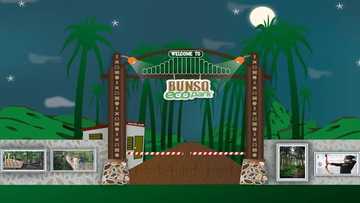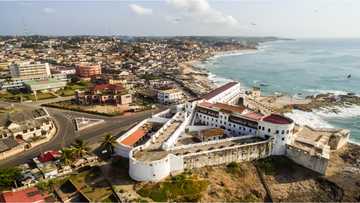50 Interesting, fun facts about Cuba: Here is why you should visit
Cuba is an island with delicious food, a vibrant culture, classic automobiles, and gorgeous beaches! Being the most oversized island in the Caribbean, it's a great site to dive deeply into the local culture. It's also an excellent place for sun-loving vacationers. Discover more interesting, fun facts about Cuba.

Source: UGC
TABLE OF CONTENTS
- 50 fun facts about Cuba
- 1. Cuban cigars are legendary
- 2. The country does not sell Coca-Cola
- 3. The capital city of Cuba is Havana
- 4. Cuba contains nine UNESCO World Heritage Sites
- 5. Dominoes is the national game of Cuba
- 6. Cuba is the largest island in the Caribbean
- 7. Since 1965, Cuba has been ruled by the Cuban Communist Party
- 8. The country has the highest doctor-patient ratio
- 9. Cuba has more than half of Its roads unpaved
- 10. There are two monetary systems in the country
- 11. Cuba's classic vintage cars have a complicated background
- 12. Catholicism is the primary religion in Cuba
- 13. Cuba is the top producer of sugar
- 14. The national flower of Cuba is the butterfly jasmine
- 15. Cuba has a vibrant festival culture
- 16. It has the lowest birth rates in the Western Hemisphere
- 17. Cuba has a large number of political prisoners
- 18. Internet accessibility has long been limited
- 19. Cuba is a founding member of the United Nations
- 20. Voting is legally mandated in Cuba
- 21. The ideal time to visit Cuba is during the dry season
- 22. Healthcare is free for Cuban citizens
- 23. Everything in Cuba is political
- 24. Cuba is a relatively safe nation
- 25. The Plaza de la Revolucion is the nation's most iconic square
- 26. There are no statues of Fidel Castro
- 27. The average Cuban earns about $234 each month
- 28. Tipping in Cuba is usual
- 29. Cuba is one of the greatest music centres in the world
- 30. Cuban tap water is not safe
- 31. Cuban Airbnbs are called "Casas Particulares"
- 32. Ernest Hemingway stayed in Cuba for a third of his life
- 33. Public transport is primarily for locals
- 34. Cuba is the origin of several popular cocktails
- 35. To celebrate the New Year, Cubans march with a suitcase and burn effigies
- 36. The US pays Cuba $4,085 per month in rent for the Guantánamo Naval Base
- 37. Che Guevara was not from Cuba
- 38. The first city established in Cuba was Baracoa
- 39. Fidel Castro survived over 600 assassination attempts
- 40. Che Guevara smoked cigars with honey
- 41. Cuban guerrilla warfare
- 42. The world's smallest bird is located in Cuba
- 43. Mobile phones and telephones were prohibited until 2008
- 44. Christmas was forbidden for 30 years
- 45. Hitch-hiking is a widespread method of travel
- 46. Cuba boasts one of the world's highest literacy rates
- 47. Santeria is the second most prevalent religion after Catholicism
- 48. Baseball is Cuba's most popular sport
- 49. Cuba is famous for its rum
- 50. The national dish of Cuba is Ropa Vieja
- What is the geography of Cuba?
Cuba, officially the Republic of Cuba, comprises the central island of Cuba, 4,195 islands and cays, the archipelagos, and Isla de la Juventud encircling the main island. The island nation is situated where the Gulf of Mexico, the northern Caribbean Sea, and the Atlantic Ocean converge.
50 fun facts about Cuba
Both tourists and scholars find Cuba an intriguing place that has captivated their attention. However, many people are still unaware of Cuba, even though it is the largest and one of the Caribbean's most popular islands. Here are a few fascinating facts about Cuba to get you started.
1. Cuban cigars are legendary
What is Cuba unique for? Cuban cigars are handmade with indigenous raw materials. Making this product involves around 100 steps, with each one hand-rolled. Each one is stamped to ensure its authenticity. They are one of Cuba's most important exports, contributing significantly to the local economy.
2. The country does not sell Coca-Cola
Cuba prohibits the purchase of one of the planet's most popular beverages. This nation is one of only two countries in the world that cannot buy or sell Coca-Cola; the other is North Korea. Both nations have a long-term trade ban with the United States.
3. The capital city of Cuba is Havana
This dynamic capital city is home to Cuba's largest port and serves as the island's commercial centre. The city has around 2.1 million inhabitants. The city's ancient district, Old Havana, is a UNESCO World Heritage Site.
4. Cuba contains nine UNESCO World Heritage Sites
These sites include Historic Centre of Camagüey, Historic Centre of Cienfuegos, Alejandro de Humboldt National Park, Archaeological Landscape of the First Coffee Plantations in the South-East of Cuba, Viñales Valley, Desembarco del Granma National Park, San Pedro de la Roca Castle, Santiago de Cuba, Trinidad and the Valley de los Ingenios and Old Havana and its Fortifications.
5. Dominoes is the national game of Cuba

Source: Getty Images
Dominoes is a game that allows you to make new friends while providing hours of amusement. It is popular in Cuba among all genders, all ethnicities, ages, faiths, and regions of the country. It is played at public parks, houses, porches, and street corners.
6. Cuba is the largest island in the Caribbean
Cuba is the Caribbean's largest island republic or territory, with approximately 111,000 square kilometres, followed by the Dominican Republic, which covers nearly 49,000 square kilometres.
7. Since 1965, Cuba has been ruled by the Cuban Communist Party
Fidel Castro was Cuba's leader for nearly 50 years. He served as Cuba's prime minister from 1959 to 1976. He then served as president from 1976 to 2008, when he handed over power to his brother Raul Castro.
8. The country has the highest doctor-patient ratio
Cuba has the highest doctor-to-patient ratio worldwide. The ratio is so high that many of the nation's physicians seek employment overseas. Doctors have been dubbed one of Cuba's most valuable exports, with Cuban doctors servicing hospitals in more than 70 nations.
9. Cuba has more than half of Its roads unpaved
Cuba has 60,858 kilometres of total road length, of which about 29,850 kilometres are paved and 31,038 kilometres are unpaved. There are also 654 kilometres of motorways in the Caribbean nation.
10. There are two monetary systems in the country
Cuba's dual economy emerged during the breakup of the Soviet Union, which brought about major financial shifts on the island. Cuba legalised the United States dollar and established a dual currency system, one built around the dollar, and the Cuban convertible peso and another centred on the Cuban peso.
11. Cuba's classic vintage cars have a complicated background
What is Cuba especially famous for? The tale of antique vehicles in Cuba is politically and historically significant. This makes Cuban classic automobiles a lovely complement to Cuba's metropolitan landscape and an essential cultural artefact. Cuba does not have a car manufacturing industry. Hence, the island's highways are entirely populated by car imports.
12. Catholicism is the primary religion in Cuba
Christianity is the most frequently practised religion in Cuba, with Catholicism constituting the most prominent denomination. A sizable portion of the Cuban populace is nonreligious or follows folk faiths. Before the introduction of Spanish missionaries, individuals living in modern-day Cuba followed various religions.
13. Cuba is the top producer of sugar
Cuba's sugar industry is the country's primary agricultural sector. Historically, the Cuban economy primarily relied on sugar exports, although production has decreased since the Soviet Union's dissolution in 1991. In 2015, raw sugar contributed $368 million to Cuba's $1.4 billion exports.
14. The national flower of Cuba is the butterfly jasmine

Source: Getty Images
Cuba's national flower, Hedychium coronarium, is called mariposa because of its unique form. During the Spanish colonial era, women adorned themselves with these aromatic blooms. Because of the inflorescence's complex structure, women could conceal and carry secret messages crucial to the cause of independence beneath it.
15. Cuba has a vibrant festival culture
Cuba hosts various exciting and dynamic festivals for individuals of all ages. International festivals highlight jazz, cigars, ballet, movies, and other subjects. Whatever your hobbies are, you're likely to discover a festival in Cuba.
16. It has the lowest birth rates in the Western Hemisphere
Cuba's population is shrinking owing to low birth rates and immigration. Since 2006, the average fertility rate for women has been 1.45 children. This is due to the legality of feticide and the broad availability of contraception.
17. Cuba has a large number of political prisoners
Over 200,000 individuals were incarcerated or had their rights violated for political reasons during Fidel Castro's long reign. These include rights-defenders activists and independent media. This trend has persisted, notably in cases of short-term detention, intimidation, harassment, and arbitrary detentions.
18. Internet accessibility has long been limited
Since its inception in the latter part of the 1990s, the Cuban Internet has languished due to a lack of funding, stringent government regulations, and an American embargo, particularly the Torricelli Act. The situation gradually improved in 2007, with 3G internet services becoming available islandwide in 2018 and 4G in 2019 via a government-monitored network.

Read also
20 best things to do in Fort Worth: Affordable and fun activities to do while in Fort Worth, Texas
19. Cuba is a founding member of the United Nations
This is one of the most significant facts from Cuba's history. Cuba played a significant impact in the world political landscape. The island officially joined the UN on 24 October 1945, making it one of its original members.
20. Voting is legally mandated in Cuba
In Cuba, all people above 16 have the right to vote and are legally required to participate in local, provincial, and national elections. Cuba's elections, however, are not democratic because the country is a one-party totalitarian regime.
21. The ideal time to visit Cuba is during the dry season
The weather is pleasant and dry at this period, with lesser humidity and less rainfall than during the rainy season. This makes it an excellent time to visit the country's various outdoor attractions, including its beautiful beaches, national parks, and historical sites.
22. Healthcare is free for Cuban citizens

Source: Getty Images
Cuba's National Health System (SNS) provides everyone free and universal healthcare. Since the revolution, Cuba has had no private healthcare system or facilities; everything is administered by the government, which considers having a sound healthcare system one of its top goals.

Read also
15+ fun things to do in Cincinnati: Activities and attraction sites to make your stay worthwhile
23. Everything in Cuba is political
Political scientists describe Cuba's political system as a single-party totalitarian dictatorship in which political dissent is not tolerated. Cuba holds elections, although they aren't regarded as democratic.
24. Cuba is a relatively safe nation
Cuba is regarded as a safe destination to visit. It has one of the lowest rates of criminal activity in the Americas. Pick-pocketing is increasingly common but not widespread and can mainly be prevented if you take a few simple precautions.
25. The Plaza de la Revolucion is the nation's most iconic square
Plaza de la Revolucion is famous in Cuban history because of its relationship with the nation's revolutionary past. The square has hosted several political demonstrations and speeches, most notably those conducted by Fidel Castro, Che Guevara, and other significant personalities throughout the Cuban Revolution.
26. There are no statues of Fidel Castro
Cuba is notable for the absence of Fidel Castro sculptures. His name will also not be associated with public areas, schools, or government buildings. Fidel Castro requested that no monuments, busts, sculptures, or other kinds of tribute be built in his memory.
27. The average Cuban earns about $234 each month
According to a 2022 poll, around 55% of the Cuban inhabitants had a monthly income of less than $234, while just 15% had an income greater than $334. During the same study, 51% of respondents claimed that they have difficulty paying for the necessities of life.
28. Tipping in Cuba is usual
Tipping for excellent service at Cuban restaurants, bars, and cafes is customary, particularly in tourist or commercial districts. Tips are often welcomed in hotels, leased apartments, and other establishments where employees may need better compensation, such as salons or spas.
29. Cuba is one of the greatest music centres in the world
Musical styles, including rumba, salsa, mambo, and son, are all part of the island's rich and varied musical history. Cuban music has had a significant global impact, and several of its most well-known musicians have attained international recognition.
30. Cuban tap water is not safe

Source: Getty Images
In certain places in Cuba, tap water is tainted with germs and other dangerous microbes. Travellers may experience a variety of health issues as a result, particularly upset stomachs. Travellers should only drink treated or boiled water instead of tap water when visiting Cuba.
31. Cuban Airbnbs are called "Casas Particulares"
Casas Particulares is a term used in Cuba to refer to private housing or homestays, which is comparable to a bed & breakfast but can also take the nature of a holiday rental. The phrase is frequently reduced to just casa when the meaning is apparent.
32. Ernest Hemingway stayed in Cuba for a third of his life
Hemingway first travelled to Cuba in 1928 and became fascinated with the nation's culture, citizens, and scenery. He finally bought a residence in the fishing town of Cojimar, located east of Havana, and devoted much of his time there for the next two decades.
33. Public transport is primarily for locals
In Cuba, buses serve as the primary mode of public transit. Locals who have to commute to their jobs or attend school utilise them. However, public buses are not advised for travellers because they are overcrowded, uncomfortable, and have inconsistent schedules.
34. Cuba is the origin of several popular cocktails
The Daiquiri, Cuba Libre and Mojito are some of the most well-known cocktails to have originated in Cuba. The Mojito, a delightful cocktail made with lime juice, rum, soda water, sugar, and mint, was a favourite of author Ernest Hemingway while in Cuba.
35. To celebrate the New Year, Cubans march with a suitcase and burn effigies
On New Year's Day, Cubans hurl a bucket of water and burn sculptures to ward off misfortune from the previous year. They also stroll around the block carrying a suitcase to "bring travel" into the New Year.
36. The US pays Cuba $4,085 per month in rent for the Guantánamo Naval Base
Guantanamo Bay Naval Post is a US naval post in southeastern Cuba rented to the US since 1903. The United States pays Cuba around $4,085 per year for its use of the Guantanamo Bay Naval Base. However, the nation refuses to embrace it.
37. Che Guevara was not from Cuba

Source: Getty Images
Ernesto "Che" Guevara is one of Cuba's most well-known individuals, but not Cuban. Ernesto was born in Argentina to a wealthy household and trained as a physician.
38. The first city established in Cuba was Baracoa
Baracoa, a national monument in Cuba, is the island's earliest colonial city, referred to as the First City. The province of Guantánamo, on the island's eastern extremity, is home to all of its beauty.
39. Fidel Castro survived over 600 assassination attempts
The American Central Intelligence Agency attempted several unsuccessful assassinations of Cuban leader Fidel Castro. There were additional efforts by Cuban exiles, sometimes working with the CIA. The 1975 Church Committee reported eight confirmed CIA attempted murders between 1960 and 1965.
40. Che Guevara smoked cigars with honey
Che Guevara always immersed his Montecristo No. 4 in honey, believing the honey's natural filter would keep the smoke from irritating his asthma.
41. Cuban guerrilla warfare
This is one of the fun facts about the Cuban revolution. The Cuban Revolution is famous for strategically employing guerilla warfare techniques, especially in the mountainous Sierra Maestra highlands. Fidel Castro and his fellow revolutionaries, notably Che Guevara, fought the Batista regime for many years, using hit-and-run strategies, attacks, and demolition operations.
42. The world's smallest bird is located in Cuba
Cuba is the residence of over 2500 different bird species. The island is home to the world's most unique and smallest bird, the hummingbird. It is 6 centimetres long in species and weighs between 1.6 and 2 grammes.
43. Mobile phones and telephones were prohibited until 2008
Cubans weren't permitted to use phones until 2008. For national security reasons, no Cuban could lawfully own a cell phone. International corporations primarily used it. Some Cubans may get around the rule by allowing others to sign agreements on their behalf.
44. Christmas was forbidden for 30 years
This is one of the cultural facts about Cuba. The country was designated an atheist state after Fidel Castro's communist regime took control in 1959. Castro banned Christmas as a national holiday in 1969, citing its harmful impact on sugar output in the country. Cuba's 30-year ban on Christmas was lifted in 1997 following Pope John Paul II's remarkable visit to the island.
45. Hitch-hiking is a widespread method of travel

Source: Getty Images
While going across Cuba, you may observe a high concentration of local hitchhikers on major roads. A large number of Cubans do not have automobiles. While the transportation system has improved recently, buses are typically packed and infrequent. Therefore, many Cubans hitchhike to reach their destination. Government cars are legally obligated to pick up hitchhikers.
46. Cuba boasts one of the world's highest literacy rates
Cuba boasts a literacy rate of 99.8%, among the world's highest. Following the Cuban Revolution, Castro's administration initiated the Cuban Literacy Campaign to eliminate illiteracy and make education available to all, particularly those from underprivileged backgrounds. Education became mandated from age six to fifteen, and private schools and institutions were nationalised.
47. Santeria is the second most prevalent religion after Catholicism
During the colonial period, thousands of enslaved Africans were transported to the Caribbean to labour on plantations. Many components of Cuban culture have African roots, including music and religion. Santeria, a religion founded by Cubans of West African descent, is a significant component of Afro-Cuban culture.
48. Baseball is Cuba's most popular sport
Baseball is deeply linked to present-day Cuban identity, and the country has won gold medals in two Olympic tournaments. The nation is known as a 'baseball powerhouse'.
49. Cuba is famous for its rum
While rum is believed to have debuted in Jamaica, Cuba is one of the leading manufacturers of this island liquor. This alcohol is of high quality because sugar is abundant in Cuba and serves as its primary ingredient.
50. The national dish of Cuba is Ropa Vieja
Cuba's national cuisine is ropa vieja, a hearty stew comprised of chopped beef, onions, tomato sauce, and peppers. The stew usually comes with yellow rice and a glass of refreshing beer on the side.
What is the geography of Cuba?
Cuba is an elongated and narrow island. It's 750 miles (1,200 kilometres) long from east to west, yet just 60 miles (100 kilometres) wide in most spots. Around a third of Cuba is covered in high mountains and hilly terrain. The remaining two-thirds of the island is covered in lowland plains primarily used for farming.
Above are some of the most interesting fun facts about Cuba. Cuba is a beautiful place with the astonishing ability to steal travellers' imaginations for decades. It is a place that captivates travellers with many unique aspects, including its colourful streets, enthralling music, and kind hospitality.
Yen.com.gh recently published an article featuring some fun facts about Argentina. Argentina, known as the Land of Silver, is an intriguing nation with an extensive history, diverse culture, and different landscapes.
Argentina is known for its numerous stunning landscapes, distinct cultural styles, and, most significantly, its people. Read the article for engaging and entertaining facts about Argentina's history, culture, and location.
Source: YEN.com.gh














